In light of current events, The Halloween Spirit feels especially vital. I believe that knowing the various origins and conceptions of this internationally recognized celebration is powerful and adds to how and why we take time out of our routines to engage in costumery, superstition, and what might normally be scary and embrace it as part of our whole selves.
With that in mind, I offer my reflections on the history of the end of the harvest season, and the ways in which the modern concept of American Halloween has grown. Indeed, the rate at which American culture has engulfed Halloween is downright spooky.
Halloween, both globally and nationally, has a rich history. The modern US conception of Halloween likely has its roots in the Celtic celebration of Samhain (pronounced sow-in) whose literal etymology means the end of summer. Following a number of harvest festivals, this truly marked the beginning of winter.
This theory remains contested among academics, with some historians noting similar festivals in the same region, such as Brythonic Calan Gaeaf in Wales, Kalan Gwav (Allantide) in Cornwall, and Sauin on The Isle of Man, and others insisting that Halloween was a purely Christian tradition with no overlap with older traditions.
Modern Pagans continue celebrations of Samhain, which is traditionally a liminal time, or a period when the veil between the physical and ethereal worlds becomes thin. This belief has translated in many ways through many centuries. Traditionally, bonfires would be lit in a similar fashion as Beltane, in a direct Sabbatic link, and people would wear costumes to ward off or welcome spirits.
This day was known both for the dangers of the spirits of the departed as well as a powerful time of predictions and divinations. In this pastoral time, these divinations would have been extremely important as winter approached. Historically, the fires built on Samhain held the embers that lasted all winter. By 43 AD, the Roman Empire held the majority of Celtic Territory, which saw a combining of Roman and Celtic beliefs.
Whether the name and core practices were based on older traditions or not, the blending of beliefs has continued. On May 13, 609 A.D. Pope Boniface IV dedicated the Pantheon in Rome in honor of all Christian martyrs, and the Catholic feast of All Martyrs Day became central to the growing Catholic culture.
In the Eighth Century Pope Gregory III incorporated Saints as well, and established the date of November 1st. This soon became known as All Saints Day, incorporating older traditions as well as new, and designating October 31st as All Hallows Eve, the direct etymological root of Halloween. Over time, Halloween evolved into a day of activities like trick-or-treating, carving jack-o-lanterns, festive gatherings, donning costumes and eating treats.
As Celtic and other non-Christian customs merged throughout Europe, All Hallows Eve flourished with many geographically distinct traditions. However, during The Reformation many previously celebrated holidays were suppressed in England and its territories as the Protestant land did not celebrate Saints.
However, the 1605 attempt by Guy Fawkes to blow up parliament provided a new opportunity to celebrate very close to the date of Halloween, on Nov. 5th. Officiated as The Observance of 5th November, Gunpowder Treason Day, or Guy Fawkes Day, saw both strong Protestant sermons among upper classes and raucous celebrations by lower classes, featuring the burning of effigies and children wearing masks requesting a “penny for The Guy.” The latter is likely the modern origin of Trick or Treating. Guy Fawkes Day carried strong Protestant, and anti-Catholic, sentiments and these were eventually exported to the colonies, including North America.
Although The Puritans celebrated Guy Fawkes day for several decades, Halloween was increasingly celebrated in southern colonies. Just as Roman and Celtic traditions met, so too did a distinctly “American” Halloween tradition emerge. However, the modern American picture of Halloween did not fully manifest until the 19th century, as Irish immigrants settled. They brought with them the Catholic celebrations of All Hallows Eve, although by now Halloween was the common locution. This also saw the reintroduction of Trick or Treating, thus giving birth to the Halloween Industry as we now know it. However, the spreading of tradition applied to far more than just the United States.
Throughout the Americas, Día de Muertos is celebrated. It is important to understand Spanish and English colonization in a proper context. While Spanish provinces were more resource oriented, English landholdings were more likely to establish economies based on trade which quickly became their own economies.
This creates a cultural difference; English colonies were often originally made up of those who desired to split from their origins, Spanish colonies were more loyal to the crown. This is not to say that uprisings from those being conquered did not occur regularly, but it also makes sense that culturally Spanish colonies remained Catholic while English colonies split radically. As such, Día de Muertos celebrations have, largely, been celebrated without interruption for centuries.
Día de Muertos is generally attributed as a Mexican holiday but is celebrated throughout the Hispanic and Spanish speaking world. Much like it’s origin holiday, it is a celebration of Saints, family and the thinning of the veil between life and death. For many, November 1st is actually a more important day than All Hallows Eve; the celebration of the Eve is very different from a recognition of the day when we meet that veil.
Like many liturgical holidays, this is a multiple day celebration including family and friends gathering to pray, create altars, prepare food and praying for and remembering friends and family members who have left this world. These traditions are connected throughout the Spanish speaking work, seeing the creation of altars in cemeteries and homes, offerings to the deceased, and visiting graves and important sites.
In Japan, for the past 21 years near the end of October, nearly 4,000 costumed Halloween enthusiasts from all around the world have gathered in Kawasaki, just outside Tokyo, for the Kawasaki Halloween Parade, which is the biggest parade of its kind in Japan. The Kawasaki Halloween Parade has strict guidelines and standards, and all participants must apply two months ahead of time.
This year, this festival is being held remotely. Many East Asian cultures celebrate festivals that echo themes of Halloween in late Summer, including Pangangaluluwa and Pitru Paksha which focus on those spirits in purgatory. This seasonal difference reflects harvest times; it is a cultural pluralism that shows that the ending of seasons affects us all, at different times and in different ways.
That sense of pluralism is important; we have options in how we celebrate that belong to specific cultures and that inherent ownership is extremely important in the face of the colonialism and culture that these practices grew out of. They are not all ours to practice, but they are important to understand.
As we navigate a socially distanced world, it might be time to revisit that history and rewrite some of our own traditions, even if they are things we do alone simply because there is power in seeing a light in the darkness as winter approaches. Even in our modern age, we understand that seasons change, and we change with them.
Today, Americans spend an estimated $6 billion annually on Halloween, which also accounts for half of all US candy sales. It has also given rise to the concept of the Halloween Movie, building out of the horror genre. The American Halloween Culture is deeply embedded; even as many socially distance offerings of scary movies, TV shows as well as traditions of ghost stories and superstitions continue to occupy us.
Group viewing, distance trick or treating, and the spooky spirit alive in all of us creates Halloween, as we end our harvest season and enter into the dark months to come. Perhaps our greatest power at this time is our very spookiness; the skewed perspective upwards and inwards as we approach new and important moments. The asking of a coin, the bargaining with a spirit, the inherent classist drama, is a duplicity and this tradition we embrace both accidentally and by design may be a method in itself.
As someone fond of words, spooky feels appropriate to these times. The first use of the word as a noun occurred in Dutch around the turn of the 19th century to describe an apparition or spirit, and over a few decades found it self described, verbed, and now, to spook may be to feel that the world has turned on us. We are, all of us, spooked, and with that I wish you the best of Halloweens.
We are rolling into unprecedented territory. Trick or treat?
Author
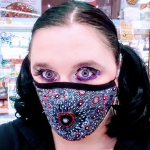
Morgan is a Seattle Central alumni currently attending Oregon State University where she is majoring in Anthropology. In addition to writing, she enjoys painting and linguistics. She lives in a very small house with a very fat cat.



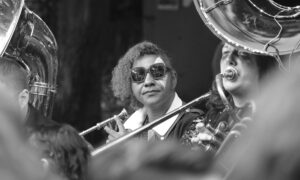
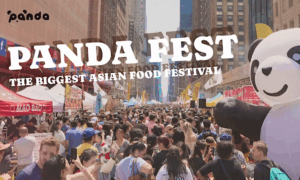
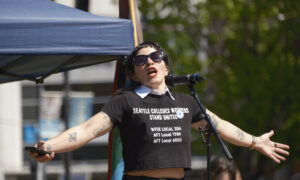

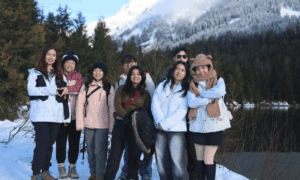
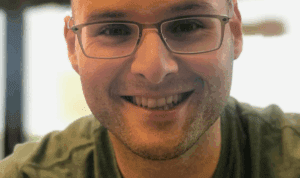

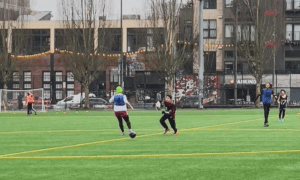
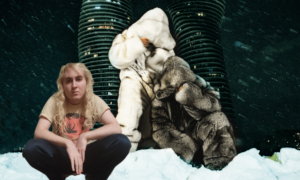
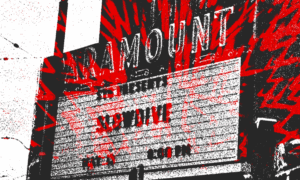
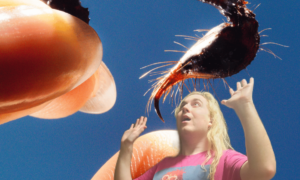
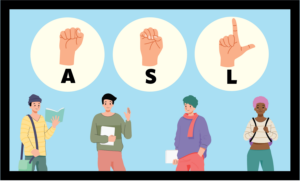
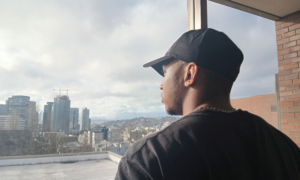
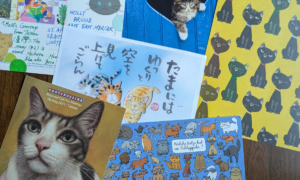
Be First to Comment